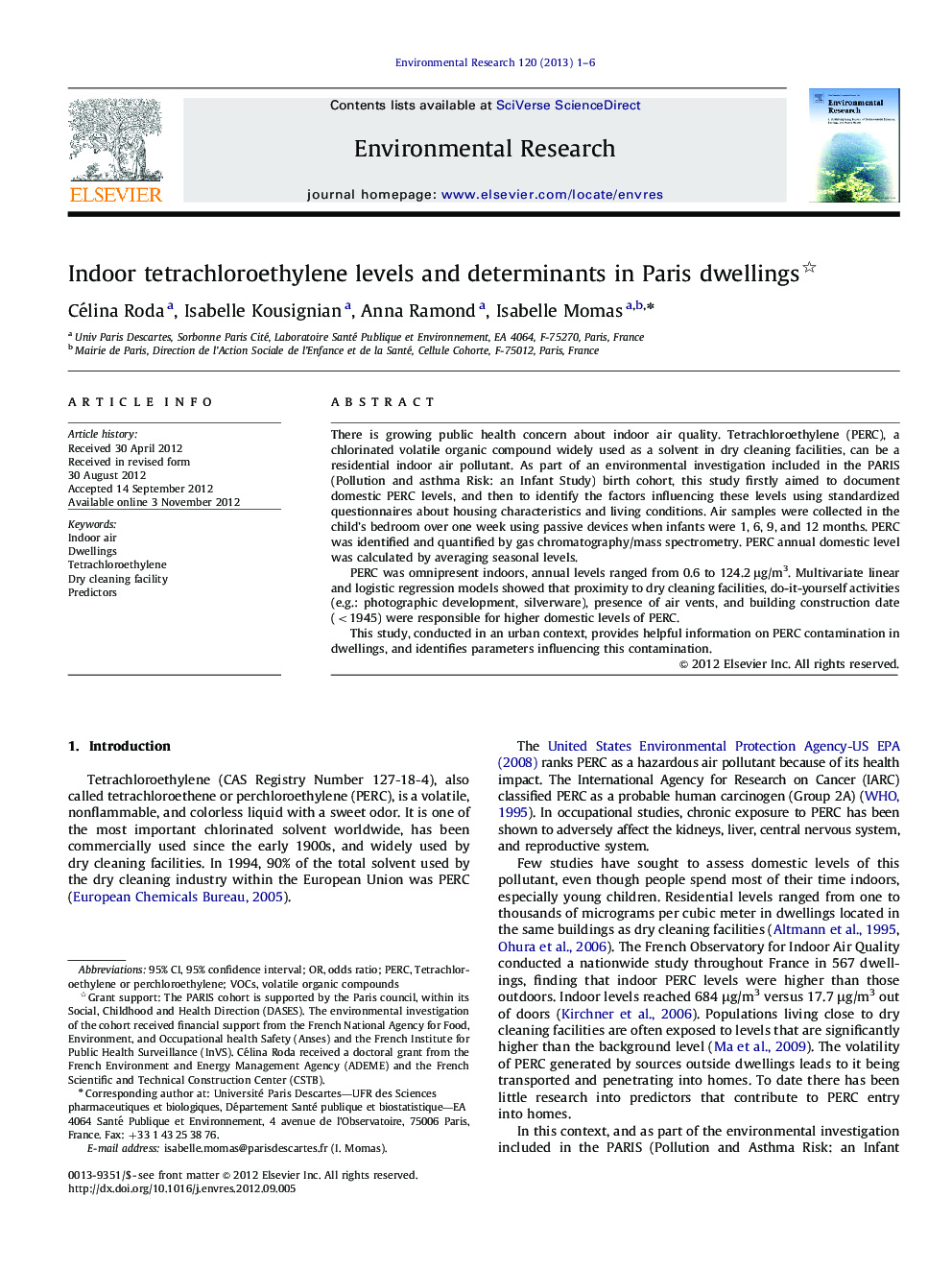| Article ID | Journal | Published Year | Pages | File Type |
|---|---|---|---|---|
| 4469895 | Environmental Research | 2013 | 6 Pages |
There is growing public health concern about indoor air quality. Tetrachloroethylene (PERC), a chlorinated volatile organic compound widely used as a solvent in dry cleaning facilities, can be a residential indoor air pollutant. As part of an environmental investigation included in the PARIS (Pollution and asthma Risk: an Infant Study) birth cohort, this study firstly aimed to document domestic PERC levels, and then to identify the factors influencing these levels using standardized questionnaires about housing characteristics and living conditions. Air samples were collected in the child's bedroom over one week using passive devices when infants were 1, 6, 9, and 12 months. PERC was identified and quantified by gas chromatography/mass spectrometry. PERC annual domestic level was calculated by averaging seasonal levels.PERC was omnipresent indoors, annual levels ranged from 0.6 to 124.2 μg/m3. Multivariate linear and logistic regression models showed that proximity to dry cleaning facilities, do-it-yourself activities (e.g.: photographic development, silverware), presence of air vents, and building construction date (<1945) were responsible for higher domestic levels of PERC.This study, conducted in an urban context, provides helpful information on PERC contamination in dwellings, and identifies parameters influencing this contamination.
► Domestic tetrachloroethylene (PERC) levels were assessed in an urban context. ► Housing and living conditions that influence PERC levels were investigated. ► Indoor levels were inversely associated with the distance to dry cleaning facilities. ► Air vents and window opening time can contribute to a rise in domestic PERC levels.
